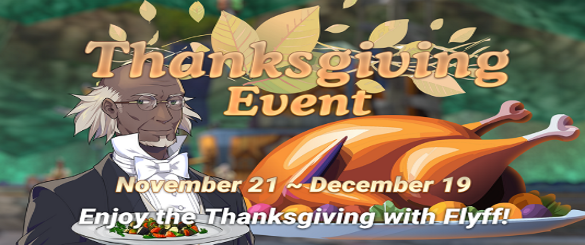Basic Support Ringmaster Guide
Table of Contents
Introduction
Before we dive in, let’s clarify a few things: This guide is aimed at players with minimal resources—low-level upgrades and few, if any, consumables. We’re focusing on what you need, not what’s possible. Also, we’ll assume that you don’t have a high-level character supporting you, since, as a support class, you’ll typically be providing the support yourself. Finally, this guide is for players who have already reached Level 60 with their Assist.
Stat Points ("H")
When it comes to stat distribution, it’s quite straightforward. For a Full Support Ringmaster, you should go full INT. There’s little debate here; you want long-lasting, strong buffs, and in Flyff Universe, buffs scale with INT. For example, the skill Cannon Ball scales with DEX at a rate of +1 per 25 INT, up to a maximum of +20 additional points. This means you’ll want to maximize your INT to reach the highest possible buff values, eventually hitting maximum effectiveness at 500 INT. At that point, all your buffs will be at their strongest, making you the ultimate support character.
Skill Points ("K")
Skills are critical for a Support Ringmaster, but we must refer you to another guide buff prioritization guide for all classes and playstyles. In this guide, we outline which buffs to prioritize, depending on your needs. For now, let’s focus on the non-buff skills and what they offer
Key Non-Buff Skills:
- Moon Beam: This skill increases the damage dealt by your main character or damage dealer. However, it’s most effective in dungeon boss fights or against giants, where enemies last longer. For standard monsters, its value is limited, so we recommend keeping this skill at a low level and focusing on other priorities initially.
- Prevention: This skill isn’t critical but can occasionally save your life when you’re hit by unexpected aggro monsters during leveling. However, as a support character, you’re generally quite fragile, so Prevention won’t always be enough to save you. You can deprioritize this skill if necessary.
- Stonehand: This skill is useful if you’re supporting an AoE farmer. It allows you to contribute by stunning monsters by using the AoE skill Merkaba Hanzelrusha, but it’s situational and primarily relevant when supporting an AoE partner. In other cases, it can be safely deprioritized.
Essential Buffs and Skills
As a Ringmaster, your most important assets are your buffs. While we won’t cover every Assist buff here, keep in mind that Protect, Spirit Fortune (SF), and Geburah Tiphreth (GT) are essential for any support build. You should also consider Holyguard, which increases resistance to critical hits. However, this buff is most relevant when supporting AoE classes and isn’t as crucial for 1v1 leveling, making it one of the least important skills to max out.
Holycross (HC) is another important skill. It doubles the damage dealt to an enemy with the next hit. While it requires more active play, it’s vital for both leveling and boss fights. AoE farmers, however, won’t benefit much from it.
For hybrid builds where you mix support with AoE farming yourself, consider leveling Merkaba Hanzelrusha. This skill is excellent for adding AoE damage when assisting an AoE farmer. For those supporting 1vs1 characters, you can safely ignore this skill and focus on others.
Healing Skills
- Heal: Heal is still highly effective even at Level 3, thanks to your high INT stat. If you’re only supporting a 1vs1 character, Level 3 Heal should suffice.
- Heal Rain: This skill is more important for AoE parties. For 1vs1 support, it’s less critical, but for AoE situations, Heal Rain becomes a game-changer. You should consider prioritizing this skill if you’re frequently supporting AoE characters.
- Gvur Tialla: This skill removes negative effects from players, similar to a Scroll of Holy (e. g. removes stun or rooting). It’s invaluable in dungeon situations, where debuffs can be lethal. However, for regular leveling, it’s not as critical and can be leveled up later.
- Barrier of Life: Available at Level 100, this skill offers near invincibility for 2 seconds. It’s particularly useful in AoE and dungeon settings, allowing you or your teammates to survive deadly situations.
Cloak
As a Support Ringmaster, your cloak choice is simple. You’ll want the +8 INT Cloak (Cloak of Wisdom) to maximize your buffs. The only time you might consider an alternative is if you need extra survivability, in which case a +8 STA Cloak (Cloak of Endurance) could provide a slight HP boost. However, the INT Cloak should be your go-to for most situations. (Cloak of Accord for +4 INT and +4 STA)
Pet
When it comes to choosing a pet, you’ll definitely want a Fox. However, be cautious not to just buy any Fox. Make sure you get the best value for your investment. For example, purchasing a Fox that only gives +5 INT at the start won’t provide much benefit. If you’re planning to invest in a pet, we recommend aiming for a Fox that offers 20 to 25 INT. This will give you a noticeable boost to your buffs, particularly when you reach key levels (every +25 INT for +1 buff boost) where every bit of INT helps maximize your effectiveness.
Jewelry
Jewelry is fairly straightforward. Your focus should be on Intiret rings—go for the highest possible INT rings you can afford. At the beginning, Intiret+1 rings will suffice. As for earrings, prioritize Defense (DEF) earrings, as you won’t be dealing damage yourself, except in rare cases when you’re supporting an AoE partner. Penzeru +1 earrings are a great choice—they offer an excellent price-performance ratio and can be used well into the ultra-high levels.
For necklaces, it depends on your playstyle. If you’re frequently healing, go for an MP necklace. However, if you’re concerned about survival, especially when you’re occasionally tanking aggro, an HP necklace might be a better choice. In either case, the impact isn’t massive, but most players will prefer the MP necklace.
Weapon and Sockets
When it comes to weapons, this part is simple for a Support Ringmaster. The level of your weapon or its upgrades is largely irrelevant since you aren’t dealing damage. A +0 weapon is perfectly fine. If you want, you can go up to +5 or +6 with Low Scroll of SProtect, but it’s not necessary. The only weapon stat that matters is INT (with Scroll of Intelligence). INT +2 should be your target, especially starting from level 105 or earlier if possible. This won’t make a world-changing difference, but it helps you reach higher buff boost a bit sooner.
For sockets, you’ll want to socket your weapon with INT, without question. There’s no need to debate this—INT sockets are the priority.
When it comes to awakening your weapon (with Scroll of Weapon Bonus), you have three main options: Merkaba Hanzelrusha (AoE skill), Moon Beam (1vs1 damage boost), or Healing. Your choice will depend on your playstyle. If you primarily run dungeons, healing boosts might be more relevant. For solo boss fights, Moon Beam could be better, while Merkaba Hanzelrusha is the clear choice for AoE support. You’ll need to decide based on whether you’re an AoE supporter, dungeon runner, or 1vs1 helper.
Set Upgrades and Sockets
Set upgrades are more important for survival, especially when dealing with random aggro during leveling. We recommend upgrading your armor set to Element +5 or +6. This can make a huge difference in your ability to survive attacks. However, the downside is that you’ll need to change elements for different monsters (e.g., from fire monsters to wind monsters), which can be a hassle.
Suit awakenings are also more relevant for Support Ringmasters compared to other classes. We recommend aiming for INT +2 on each piece of armor by around level 105, though INT +1 is fine if you’re on a budget. Even a small increase like this makes a noticeable difference.
As for general upgrades, aim for a minimum of +5 for your armor. Unlike your weapon, armor upgrades matter because you’ll occasionally be hit by aggro monsters. Being one-shot by an enemy is a terrible situation for a support character, so upgrading to +5 or +6 with Low Scroll of SProtect is crucial for your survival. Additionally, don’t underestimate the importance of elemental protection—having the right element on your suit can mean the difference between dying in one hit or surviving multiple attacks.
Finally, for armor sockets, the choice depends on your playstyle. If you’re dealing any damage, attack power sockets (Lightning Card)ay be beneficial. However, most Support Ringmasters will prefer HP sockets (Volcano Card) to enhance survivability.
Sets
Wedge/Flury Set (Level 45)
The Wedge/Flury Set is the starting point for a Support Ringmaster and remains crucial until higher levels. The reasons for its popularity are clear:
- +7 INT: Is very good.
- MP consumption reduced by 20%: This is vital for healing, as you’ll burn through a lot of MP.
- 20% casting time: At level 45, this is a game-changer, allowing you to heal and buff faster than without it.
This makes the Wedge/Flury Set the top-tier choice for low-level Support Ringmasters. However, its low defense can be problematic, especially as you progress through tougher areas.
Shupon/Shrian Set (Level 90)
Once you reach level 90, the 4pieces Shupon/Shrian Set becomes available and should replace the Wedge Set. While the stats are similar, there are important differences:
- +10 INT: Is very good.
- 10% increased healing: This stat boosts your effectiveness as a healer.
- 20% casting time: Like the previous set.
- Improved defense: This is a critical improvement over the Wedge Set, as it provides much-needed survivability in higher-level content.
If you find yourself frequently dying in the Wedge Set/Flury before reaching level 90, consider mixing and matching gear for survival. For example, combining two pieces of the Wedge/Flury Set with two pieces of a higher-defense set like Clockworks’ Rashadain/Yuandain Set could provide a better balance between casting time and staying alive.
Set Combination
A useful life hack for Ringmasters is to mix set pieces to maximize buffs. For example, if you’re on the verge of reaching a higher buff level, try wearing two pieces of the Wedge/Flury and two pieces of the Shupon/Shrian Set while buffing. This combination can help you hit a higher buff boost and slightly improve your leveling speed. Outside of buffing, switch back to more tankier gear if needed for better protection. Two pieces of each set gives you a total of +17 INT.
Navil/Neclus Set (Level 105)
At level 105, the 4pieces Navil/Neclus Set becomes your next goal. This set is ideal for Support Ringmasters because it offers:
- +15 INT: Increasing your INT directly improves your buffs and healing power.
- +30% casting time and 15% healing: These bonuses ensure you can keep up with the demands of higher-level dungeons and parties.
- Increased defense: Providing better protection than previous sets, the Navil/Navi Set is the first “true” endgame support set due to its well-rounded stats.
You can also combine two pieces of the Navil/Navi Set with two pieces of the Shupon/Shrian Set for an additional +25 INT, boosting your buff levels even further.
150+ Endgame Sets
At level 150, your set choice depends heavily on your playstyle and available resources. The top-tier endgame sets are very expensive, but they offer some incredible benefits:
- PvE Set (cheaper option): The Reine/Rayne Set is more affordable and suitable for high-level AoE farming, though it’s less ideal for pure support. It provides better damage reduction, HP regeneration, block rate, and general survivability.
- Cast Time Set (high-end option): If you can afford it, the Luminis/Luminia Set offers 40% faster casting time, making it perfect for healing and buffing in endgame PvE content. It also includes 15% attack and a Skill Healing Grace Chance, but its main draw for Support Ringmasters is the 35 INT bonus.
While these sets are powerful, they’re often out of reach for most players due to their cost. Most Ringmasters will end up sticking with the Keinos/ Keisan Set for a while before moving to a more specialized build based on their remaining equipment. Keisan Set
Ringmaster Weapons
Buffing and Supporting Sticks (Pre-Level 105)
As a Ringmaster, you’ll need to differentiate between sticks for buffing and supporting until you reach level 105. Here’s a breakdown:
- Guardian Stick (up to level 90): This stick grants +7 INT, making it ideal for buffing during your early levels.
- Angel Stick (from level 90): At this stage, the Angel Stick is superior, providing +15 INT, which significantly enhances your buffs.
No other stick offers INT until level 105, so these two are essential for buffing. They won’t improve your healing or casting speed, but they are crucial for keeping your buffs strong
Supporting Sticks for Healing and Casting Speed
For support during combat, a different stick might be more appropriate, depending on your focus:
- Hyper Stick: This is a common stick that drops from monsters and is typically sold by players. With +10% casting time, it’s a solid choice for faster healing and support, especially if casting speed is a priority.
- Stick of Roritoren: +15% casting time, and +5% Healing
- Stick of Iblis: If your party doesn’t rely heavily on your healing, Stick of Iblis offers increased skill damage+10%. However, this stick is often expensive and less recommended for pure support play.
Historic Stick (Level 75)
The Historic Stick is a bit of an oddity. It offers:
- +15% casting time
- +30% MP
While the casting speed is valuable, it lacks the INT stat that other sticks provide, which is a major drawback for Ringmasters focused on buffing. Though the extra MP is useful, the lack of INT makes it a suboptimal choice for buffing and healing. For pure buff, the Guardian Stick and Angel Stick remain better options. Historic Stick can be used to support during the fight.
Legendary Golden Stick (Level 105)
At level 105, things become more streamlined:
- Legendary Golden Stick (LG Stick): This is the go-to stick for most high-level Ringmasters. With +15 INT, +20% casting time, and +10% healing, it’s the perfect stick for both buffing and supporting. It’s hard to beat, and once you get it, you likely won’t switch until much later.
Bloody Stick (Level 120)
At level 120, the Bloody Stick becomes available:
- +10% healing
- +25% casting time
While this stick is slightly better than the LG Stick for healing and casting, it lacks the +15 INT that the LG Stick provides, making it less ideal for buffing. For this reason, you’ll want to keep the LG Stick for buffing purposes, even after obtaining the Bloody Stick. However, for pure healing and casting speed in combat, the Bloody Stick is a solid option, albeit an expensive one.
Endgame Sticks (Level 150+)
At the absolute high levels, stick choices depend on your playstyle and budget:
- Song of Sirens: This stick offers a balanced mix of healing +10~15%, casting time +26~30%, and attack 10~15%. It also has an AoE skill Waterbomb attached, allowing it to contribute some damage. However, it’s extremely expensive and mainly useful for hybrid support-damage roles, which is less relevant for pure support Ringmasters.
- Lusaka’s Crystal Stick: This stick grants INT +25~30, healing +12~17%, casting time +28~33%, and attack 12~17% , but at higher levels, you’ll often have enough INT from other gear. It’s helpful for buffing, but the cost is usually prohibitive, and the benefits may not justify the price.
Overall, the Legendary Golden Stick (LG Stick) and Bloody Stick combo is the most popular among high-level Ringmasters due to their exceptional support-focused stats.
Support Ringmaster playstyle Tips
The basics of Ringmaster support:
- Following Your Party: As a Ringmaster, your primary role is to follow the lead of your leveling partner, casting heals as needed. Keep your Heal and Holycross (HC) spells ready. When the monster is targeted by your partner, use HC to increase damage output. You can chain HC on multiple targets, but it requires coordination and awareness of the battle flow.
- Active Healing and Buffing: During combat, be sure to keep buffs active and heal consistently. Your timing and positioning are key, especially in tougher areas where aggro can make you vulnerable. Use Stonehand and Merkaba Hanzelrusha in specific scenarios to support AoE leveling if necessary, but be cautious, as taking aggro can be dangerous.
Source: The Guide was originally explained by Spielestyler in his YouTube video in German.
Views: 1433










